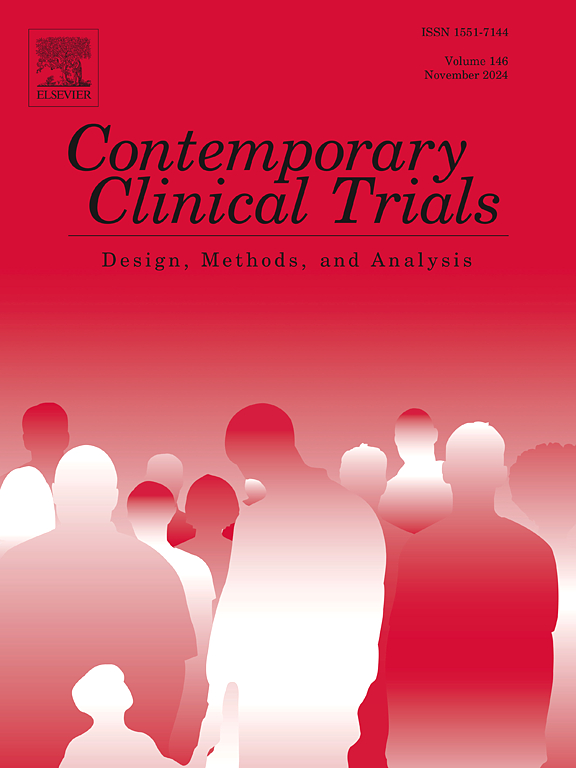关于胜率的能量考虑:基于等级的模拟方法
IF 2
3区 医学
Q3 MEDICINE, RESEARCH & EXPERIMENTAL
引用次数: 0
摘要
胜率是临床试验中评价疗效的一种创新的统计方法。结果的潜在分布,以及潜在的审查、联系和相关性,增加了为研究设计目的指定胜率的复杂性。由于成功的研究计划取决于对样本量和统计能力的充分考虑,我们开发了一种灵活的方法来支持在临床试验中使用胜比。方法基于胜率和排名分布之间的关系,我们开发了一种基于模拟的研究设计方法。我们证明了,在没有审查和约束的情况下,策略样本是根据备择假设下指定的胜率进行的。我们结合了行政审查、联系和相关性,并进行了模拟研究,以评估第一类误差和功率方面的方法。我们在特定的参数分布假设下生成数据,并使用基于秩的模拟确定的样本量来总结统计功率。结果表明,该方法保留了假设胜率下的I型误差和样本,并为给定样本量的统计功率提供了信息指导。winratiopss R包提供了实现上述方法的功能。结论该模拟策略为涉及胜率分析的试验设计提供了一种新颖而灵活的方法。本文章由计算机程序翻译,如有差异,请以英文原文为准。
Power considerations for the win ratio: A rank-based simulation approach
Background
The win ratio is an innovative statistical method for evaluating efficacy in clinical trials. The underlying distributions of outcomes, along with potential censoring, ties, and correlations, add complexity to specifying a win ratio for study design purposes. As successful study planning hinges on thorough consideration of sample size and statistical power, we developed a flexible approach to support the use of the win ratio in clinical trials.
Methods
We develop a simulation-based approach for study design considerations, relying on the relationship between the win ratio and the rank distribution. We demonstrate that, in the absence of censoring and ties, the strategy samples according to the win ratio specified under the alternative hypothesis. We incorporate administrative censoring, ties, and correlations and conduct a simulation study to evaluate the method in terms of type I error and power. We generate data under specific parametric distributional assumptions and summarize statistical power using sample sizes determined by the rank-based simulation.
Results
Results indicate the proposed approach preserves type I error, samples under the assumed win ratio, and provides informative guidance on statistical power for given sample size. The winratiopss R package provides functionality to implement the proposed approach.
Conclusions
The simulation strategy offers a novel and flexible approach to inform trial design involving win ratio analysis.
求助全文
通过发布文献求助,成功后即可免费获取论文全文。
去求助
来源期刊
CiteScore
3.70
自引率
4.50%
发文量
281
审稿时长
44 days
期刊介绍:
Contemporary Clinical Trials is an international peer reviewed journal that publishes manuscripts pertaining to all aspects of clinical trials, including, but not limited to, design, conduct, analysis, regulation and ethics. Manuscripts submitted should appeal to a readership drawn from disciplines including medicine, biostatistics, epidemiology, computer science, management science, behavioural science, pharmaceutical science, and bioethics. Full-length papers and short communications not exceeding 1,500 words, as well as systemic reviews of clinical trials and methodologies will be published. Perspectives/commentaries on current issues and the impact of clinical trials on the practice of medicine and health policy are also welcome.

 求助内容:
求助内容: 应助结果提醒方式:
应助结果提醒方式:


